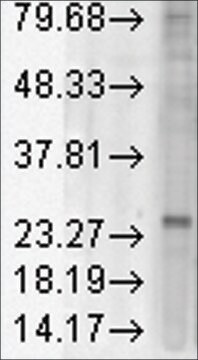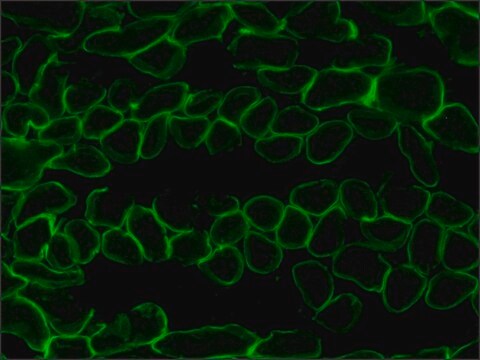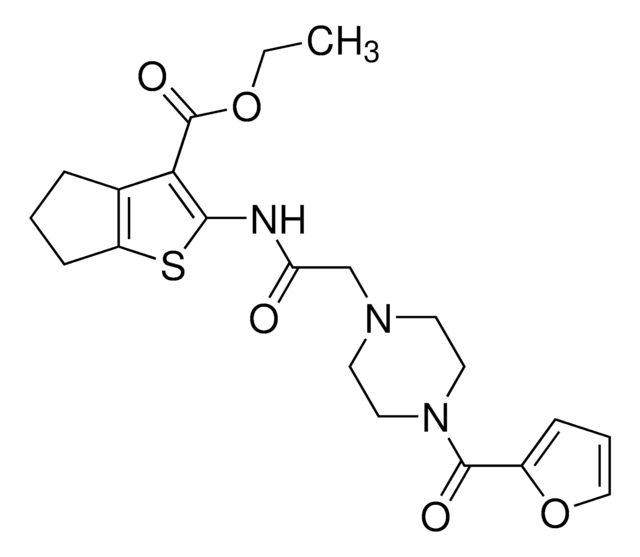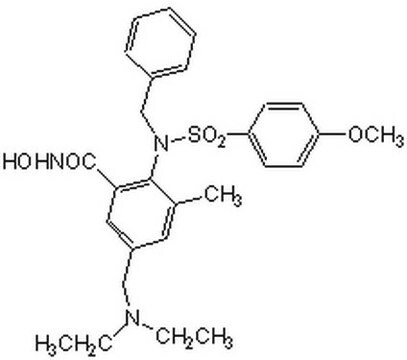420400
Anti-KDEL Mouse mAb (10C3)
liquid, clone 10C3, Calbiochem®
About This Item
Productos recomendados
biological source
mouse
Quality Level
antibody form
purified antibody
antibody product type
primary antibodies
clone
10C3, monoclonal
form
liquid
contains
≤0.1% sodium azide as preservative
species reactivity
mouse, sheep, canine, hamster, Drosophila, rat, guinea pig, human, monkey, yeast, rabbit, porcine
manufacturer/tradename
Calbiochem®
storage condition
OK to freeze
avoid repeated freeze/thaw cycles
isotype
IgG2a
shipped in
wet ice
storage temp.
−20°C
target post-translational modification
unmodified
Gene Information
mouse ... Kdelr1(68137)
General description
Immunogen
Application
Immunocytochemistry (5 µg/ml)
Immunoprecipitation (5 µg/ml)
Packaging
Warning
Physical form
Reconstitution
Analysis Note
RK-13 cells, Mouse liver microsomes, Rat liver microsomes, Heat shocked HeLa cells
Other Notes
Huovila, A.-P., et al. 1992. J. Cell Biol. 118, 1305.
Munro, S., and Pelham, H.R.B. 1987. Cell48, 899.
Munro, S., and Pelham, H.R.B. 1986. Cell46, 291.
Legal Information
¿No encuentra el producto adecuado?
Pruebe nuestro Herramienta de selección de productos.
Storage Class
10 - Combustible liquids
wgk_germany
WGK 1
flash_point_f
Not applicable
flash_point_c
Not applicable
Certificados de análisis (COA)
Busque Certificados de análisis (COA) introduciendo el número de lote del producto. Los números de lote se encuentran en la etiqueta del producto después de las palabras «Lot» o «Batch»
¿Ya tiene este producto?
Encuentre la documentación para los productos que ha comprado recientemente en la Biblioteca de documentos.
Nuestro equipo de científicos tiene experiencia en todas las áreas de investigación: Ciencias de la vida, Ciencia de los materiales, Síntesis química, Cromatografía, Analítica y muchas otras.
Póngase en contacto con el Servicio técnico








